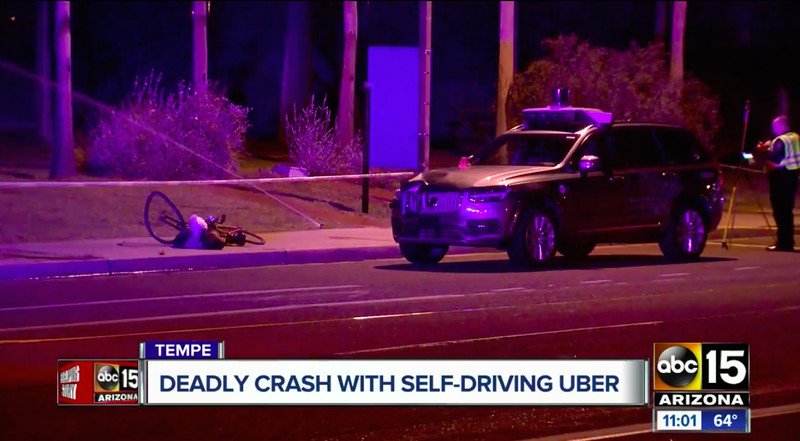NTSB: Uber self-driving car failed to recognize pedestrian or brake in fatal crash

Uber had disabled an emergency braking system in a self-driving vehicle that struck and killed a woman in Arizona in March after failing to identify the pedestrian, the National Transportation Safety Board said in a preliminary report released on Thursday.
The report said the modified 2017 Volvo XC90's radar systems observed the pedestrian six seconds before impact but "the self-driving system software classified the pedestrian as an unknown object, as a vehicle, and then as a bicycle."
At 1.3 seconds before impact, the self-driving system determined emergency braking was needed. But Uber said emergency braking maneuvers were not enabled while the vehicle was under computer control in order to reduce the potential for erratic vehicle behavior. The Volvo XC90 is typically equipped with automatic emergency braking systems designed to prevent frontal crashes.
Uber Technologies, which voluntarily suspended testing in the aftermath of the crash in the city of Tempe — the first death involving a fully self-driving vehicle — said on Wednesday it would shut down its Arizona self-driving testing program and focus on limited testing in Pittsburgh and two cities in California.
Arizona's governor in March had suspended Uber's permit for the testing, citing safety concerns.
The company did not directly comment on the NTSB findings but noted it recently named a former NTSB chairman, Christopher Hart, to advise on Uber's safety culture.
"As their investigation continues, we've initiated our own safety review of our self-driving vehicles program," the company said on Thursday, adding that it planned to announce changes in the coming weeks.
All aspects of the self-driving system were operating normally at the time of the crash, and there were no faults or diagnostic messages, the NTSB said.
The report gives new fuel to opponents in Congress who have stalled a bill designed to speed the deployment of self-driving cars on U.S. roads and puts a spotlight on the fact that the National Highway Traffic Safety Administration, which is also investigating, does not test self-driving vehicles or certify them before they are deployed on U.S. roads.
William Wallace, senior policy analyst for Consumers Union, the advocacy division of Consumer Reports, called Uber "reckless" and said the NTSB report "makes it clear that a self-driving car was tested on public roads when it wasn't safe enough to be there, and it killed a pedestrian." He added that the system "was far too dangerous to be tested off a closed track."
Uber aims to resume self-driving operations this summer, likely with smaller routes and fewer cars, the company said on Wednesday.
Uber has said it considers self-driving technology important to the future of its ride services, although it is not clear how it fits into the plans of new Chief Executive Dara Khosrowshahi. He has revamped the company structure and cut certain expenses as Uber prepares for an initial public offering next year.
Elaine Herzberg, 49, was walking her bicycle outside the crosswalk on a four-lane road when she was struck by the Uber vehicle traveling at about 40 miles (64 km) per hour.
A safety operator behind the wheel appeared to be looking down, and not at the road, moments before the crash, according to video from inside the car released by police. The operator told the NTSB she was not looking at a mobile phone but monitoring the vehicle's self-driving systems.
Tempe police said on Wednesday they had completed their investigation and turned the findings over the prosecutors to review. Police did not release the results of the probe.
The NTSB said the Uber vehicle required the operator to intervene and take action, but the system is not designed to alert the operator. The report said the operator engaged the steering wheel less than a second before impact and began braking less than a second after impact.
The report noted that Herzberg tested positive for methamphetamine and marijuana, and that she did not look in the direction of the vehicle until just before impact.
The NTSB did not say when it would release its final report on the accident. The agency typically issues its final conclusions at least a year after an accident.
It is also investigating a series of crashes involving Tesla Inc's semi-autonomous "Autopilot" system after faulting the system last year after a fatal crash in Florida.
Related News
